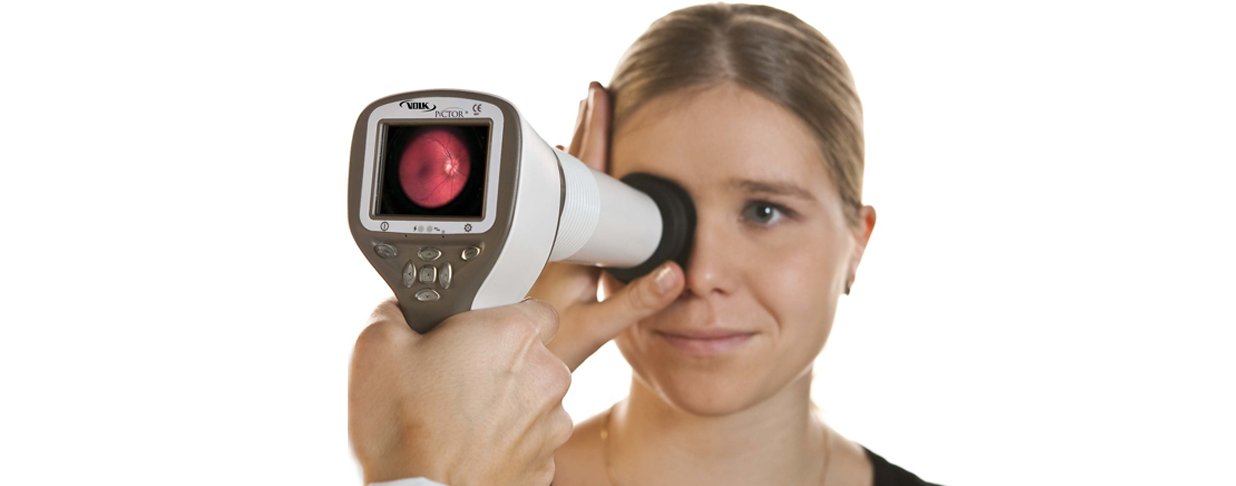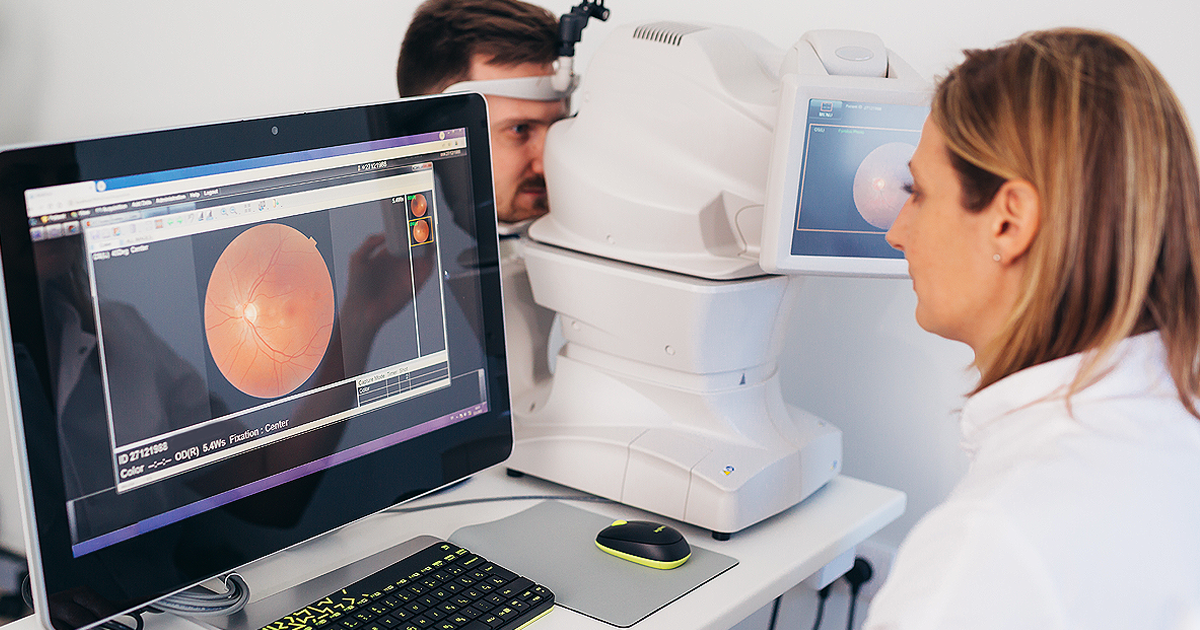Even 20/20 vision can be masking a real problem
An eye exam used to be for people who needed glasses or contact lenses…and that was it. But now we know that vision care is a critical component of overall health care — even for people who think they have perfect eyesight.
You may need vision care and not know it
Eyesight often changes slowly – too slowly for you to notice. Even for serious vision problems, you might not notice any symptoms while they’re still in the early stages. Through regular eye exams, eye doctors can detect incremental changes that people miss over time. That’s why it’s critical to receive an annual eye exam – no matter what shape your eyes seem to be in.

Eye Exams can detect early signs of serious diseases
Serious eye diseases often show no warning signs until it’s too late to treat them or slow them down. Through a comprehensive exam, an eye doctor can detect vision problems that a vision screening might miss. Regular eye exams can help detect and manage serious eye diseases like:1
Cataracts2,3:
This clouding of the lens affects more than half of Americans over 80 years old. There is no easy fix other than surgery. An eye doctor can track progress and consult on when surgery is needed.
- First signs: Blurring and hazing, usually starting around 45.
- If found early: Eyeglasses, lighting and other visual aids may improve vision.
Glaucoma4,5,6:
Glaucoma is elevated pressure on the optic nerve affecting over 3 million Americans over the age of 40. Unfortunately, treatment can’t reverse vision loss once the nerve is damaged.
- First signs: Loss of peripheral vision that can happen so slowly that it’s often unnoticed until it’s too late. Early signs can only be detected through an eye exam.
- If found early: Medicine and eye drops may prevent glaucoma from getting worse
Diabetic Retinopathy7,8:
More than 2 in 5 Americans with diabetes have some stage of diabetic retinopathy. Retinopathy is retina damage caused by sugar build-up.
- First signs: There are no early signs and Retinopathy appears only after diabetes has been present for a long time. Later sings of Retinopathy include blurry vision and floating spots.
- If found early: Controlling blood sugar and blood pressure may prevent or delay vision loss
Age-related Macular Degenration9:
Age-related macular degeneration (AMD) casus blurring in central vision. AMD is a common condition — it’s a leading cause of vision loss for people age 50 and older.
- First signs: A blurred area in central vision that slowly gets larger over time.
- If found early: There is no treatment for early cases, so tracking is critical. Treatment for more advanced cases can slow progression.
The good news is that up to 80% of vision loss is preventable or treatable — if it’s caught in time.10 The bad news is that serious eye diseases often go undetected. That’s why it’s critical to receive a comprehensive eye exam every year.
Learn more about the importance of an eye exam.
>> Download our free whitepaper
Our Clear Line of Sight whitepaper discusses:
• Hidden vision problems
• Early health indicators
• Why vision care is good business
• Member health strategies… and more
Give employees another preventative health option – contact us or reach out to your EyeMed representative today.
••••
1 ”Avoid Vision Loss By Catching Conditions Early”; yoursightmatters.com; accessed April 2020.
2Bailey, G.; “Cataracts: 3 common types, causes, symptoms and treatments”; allaboutvision.com; June 2019.
3”At a glance: Cataracts”; (2019) August 3; National Eye Institute; nei.nih.gov.
4 Berdahl MD, J.; “Glaucoma: Symptoms, treatment and prevention”; allaboutvision.com; June 2019.
5“At a glance: Glaucoma”; (2020) March 11; National Eye Institute; nei.nih.gov.
6“Glaucoma Facts and Stats”; Glaucoma Research Foundation; glaucoma.org; accessed May 2020.
7Haddrill, M.; “Diabetic Retinopathy, Diabetic Macular Edema”; allaboutvision.com; October 2017.
8 “At a glance: Diabetic Retinopathy”; (2019) August 3; National Eye Institute; nei.nih.gov.
9“At a glance: AMD”; (2019) August 2; National Eye Institute; nei.nih.gov.
10Rogers, P.; “Learn More About Avoidable Blindness and Schedule a Comprehensive Eye Examination; (2018) October 3; visionaware.org.



